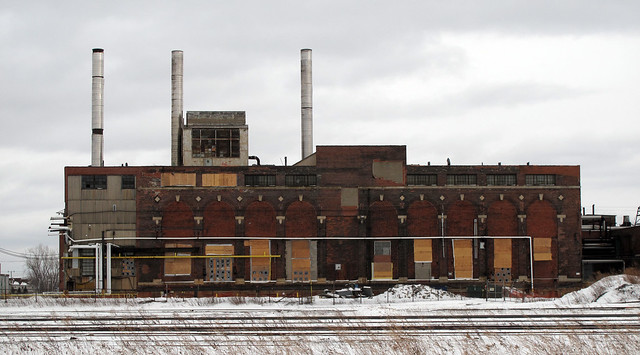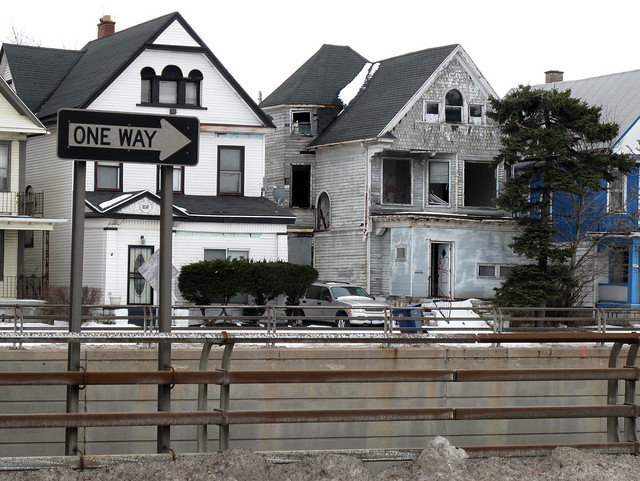The Schoellkopf Power House, erected in 1917 by the John P. Cowper Company and put into operation in 1918, is now scheduled for conversion and will be used as a rail museum.
A recent view of the Schoellkopf Power House from the end of Prenatt Street looking east across the tracks.
The industrial colossus located along the Buffalo River and home to Hanna Furnace, Republic Steel, the grain trade, National Aniline/Buffalo Color and countless other supporting service and manufacturing firms is now erie, quiet. The scape - looking in all directions - from the DL&W trestle and tracks (in the middle of the photograph) near the micro park at the end of Smith Street - is moving, especially in the context of what remains. Here's an aerial view, c. 1950.
The Schoellkopf Power House is located in the upper left hand corner of the photograph. Two map images - here and here - depict a dense industrial landscape off Lee Street.
Power houses around the world have been converted to other uses. The Tate Modern in London and The Power Plant in Toronto come to mind. The reuse of the Schoellkopf Power House comes on the successful conversion of other former industrial spaces in Buffalo - The Packard, designed by Albert Kahn and Artspace- along Main Street.
Robert Baptista has compiled an extensive history of this country's aniline dye industry. Here's the Buffalo section, tracing the origins from Jacob Schoellkopf in 1879 to Buffalo Color's plant closing in 2002. Buffalo News reporter Mark Sommer has the announcement and additional details in today's front page story about the new rail museum - here.
__________________________________________________________________________________





